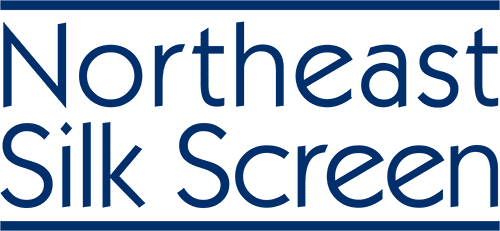Creating a design for screen printing is not as simple as taking any image and reproducing it on a silk screen. The screen printing process is not the same as inkjet or laser printing, so the graphic art designers make for screen printing must be different. At Northeast Silk Screen, we have an in-house graphic design team, but clients also come to us with pre-existing designs.
If you are designing graphic art for screen printing, here’s what you need to know.
Color Separation
Screen printing involves printing each color separately using different screens. Therefore, your design should be created to allow for easy color separation. Spot colors are also important instead of using digital color modes like RGB or CMYK.
Resolution and Size
Consider the final size at which your design will be printed. Ensure your artwork has a high enough resolution (usually 300 dpi) to maintain good print quality at the intended size. Screen printing sometimes results in slightly lower fidelity compared to digital prints.
Simplicity and Clarity
Due to the nature of screen printing, intricate details and fine lines may translate poorly onto the final print. Simplify your design and use bold, solid shapes whenever possible. Avoid small, delicate elements that may get lost during the printing process.
Halftones
Halftones are commonly used to achieve the illusion of shades and gradients in screen printing. They simulate different tones by varying the size and density of small dots. Make sure to familiarize yourself with halftone techniques and create your design accordingly if you intend to include gradients or shades.
Color Selection
Consider the number of colors you plan to use in your design, as each color requires a separate screen and printing pass. Reducing the color count can help keep printing costs down. Choose colors that work well together and avoid gradients or color blends that may be challenging to reproduce accurately.
Test Prints and Mockups
Before finalizing your design, getting test prints or creating mockups to assess how the design will appear on the actual printed product is a good idea. This allows you to make necessary adjustments or refinements to ensure the desired outcome.
